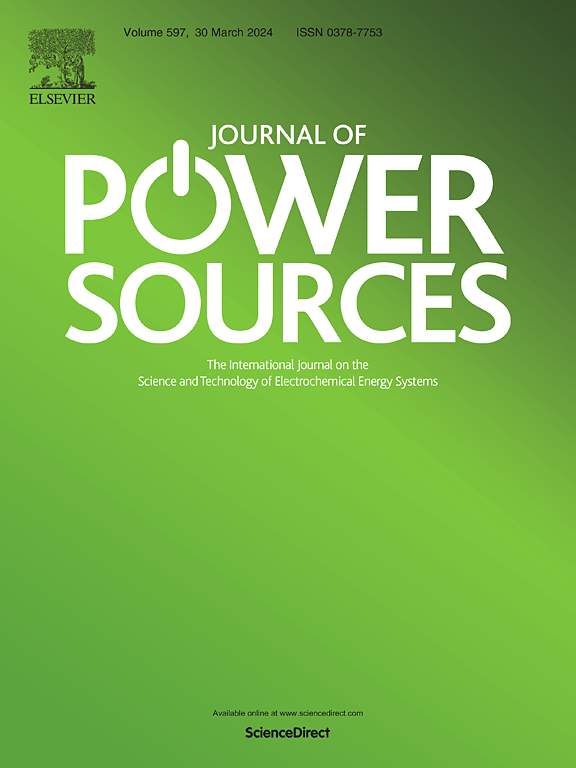氧化物热电材料:高效废热回收新策略综述
IF 8.1
2区 工程技术
Q1 CHEMISTRY, PHYSICAL
引用次数: 0
摘要
为了应对不断增长的全球能源需求和化石燃料对环境的影响,氧化物热电材料因其稳定性、无毒性和高温应用能力而成为废热回收的有希望的候选者。本文综合评价了氧化物基热电材料的关键进展,重点是p型(Ca3Co4O9, BiCuSeO)和n型(ZnO, SrTiO3, CaMnO3, In2O3)材料。实现高热电性能的关键挑战,如平衡塞贝克系数、导电性和导热性,可以通过掺杂、成分调谐、纳米结构和界面工程等多种策略来解决。值得一提的是,通过缺陷工程,铌掺杂石墨包裹体SrTiO3在1050 K时的ZT为1.42,非化学计量Ca3Co4O9的ZT为0.9,ce掺杂In2O3在1223 K时的ZT为0.47。BiCuSeO在923 K时的ZT为1.5,通过三步织构和双掺杂实现,显示了其在中高温应用中的潜力。诸如高熵氧化物成分、二维电子气体系统和先进的合成技术,如火花等离子烧结和溶剂热合成等,都显示出在这些材料上改善ZT的巨大潜力。这篇综述强调了提高热电效率的多方面方法,并概述了可扩展的、环保的热电在能量收集和工业热回收中的应用的战略途径。本文章由计算机程序翻译,如有差异,请以英文原文为准。
Oxide thermoelectric materials: A review of emerging strategies for efficient waste heat recovery
In response to the escalating global energy demand and the environmental impact of fossil fuels, oxide thermoelectric materials have emerged as promising candidates for waste heat recovery due to their stability, non-toxicity, and capacity for high-temperature applications. This comprehensive review evaluates critical advances in oxide-based thermoelectrics, focusing on p-type (Ca3Co4O9, BiCuSeO) and n-type (ZnO, SrTiO3, CaMnO3, In2O3) materials. Key challenges in achieving high thermoelectric performance, such as balancing the Seebeck coefficient, electrical conductivity, and thermal conductivity, are addressed through diverse strategies including doping, compositional tuning, nanostructuring, and interface engineering. Notable achievements include a ZT of 1.42 at 1050 K in Nb-doped SrTiO3 with graphite inclusions, a ZT of 0.9 in nonstoichiometric Ca3Co4O9, and a ZT of 0.47 at 1223 K in Ce-doped In2O3 through defect engineering. BiCuSeO stands out with a ZT of 1.5 at 923 K, achieved via three-step texturation and dual-doping, demonstrating its potential for mid-to-high-temperature applications. Innovations such as high-entropy oxide compositions, two-dimensional electron gas systems, and advanced synthesis techniques like spark plasma sintering and solvothermal synthesis have shown remarkable potential for ZT improvement across these materials. This review highlights a multi-faceted approach to improving thermoelectric efficiency and outlines strategic pathways for scalable, eco-friendly thermoelectric applications in energy harvesting and industrial heat recovery.
求助全文
通过发布文献求助,成功后即可免费获取论文全文。
去求助
来源期刊

Journal of Power Sources
工程技术-电化学
CiteScore
16.40
自引率
6.50%
发文量
1249
审稿时长
36 days
期刊介绍:
The Journal of Power Sources is a publication catering to researchers and technologists interested in various aspects of the science, technology, and applications of electrochemical power sources. It covers original research and reviews on primary and secondary batteries, fuel cells, supercapacitors, and photo-electrochemical cells.
Topics considered include the research, development and applications of nanomaterials and novel componentry for these devices. Examples of applications of these electrochemical power sources include:
• Portable electronics
• Electric and Hybrid Electric Vehicles
• Uninterruptible Power Supply (UPS) systems
• Storage of renewable energy
• Satellites and deep space probes
• Boats and ships, drones and aircrafts
• Wearable energy storage systems
 求助内容:
求助内容: 应助结果提醒方式:
应助结果提醒方式:


